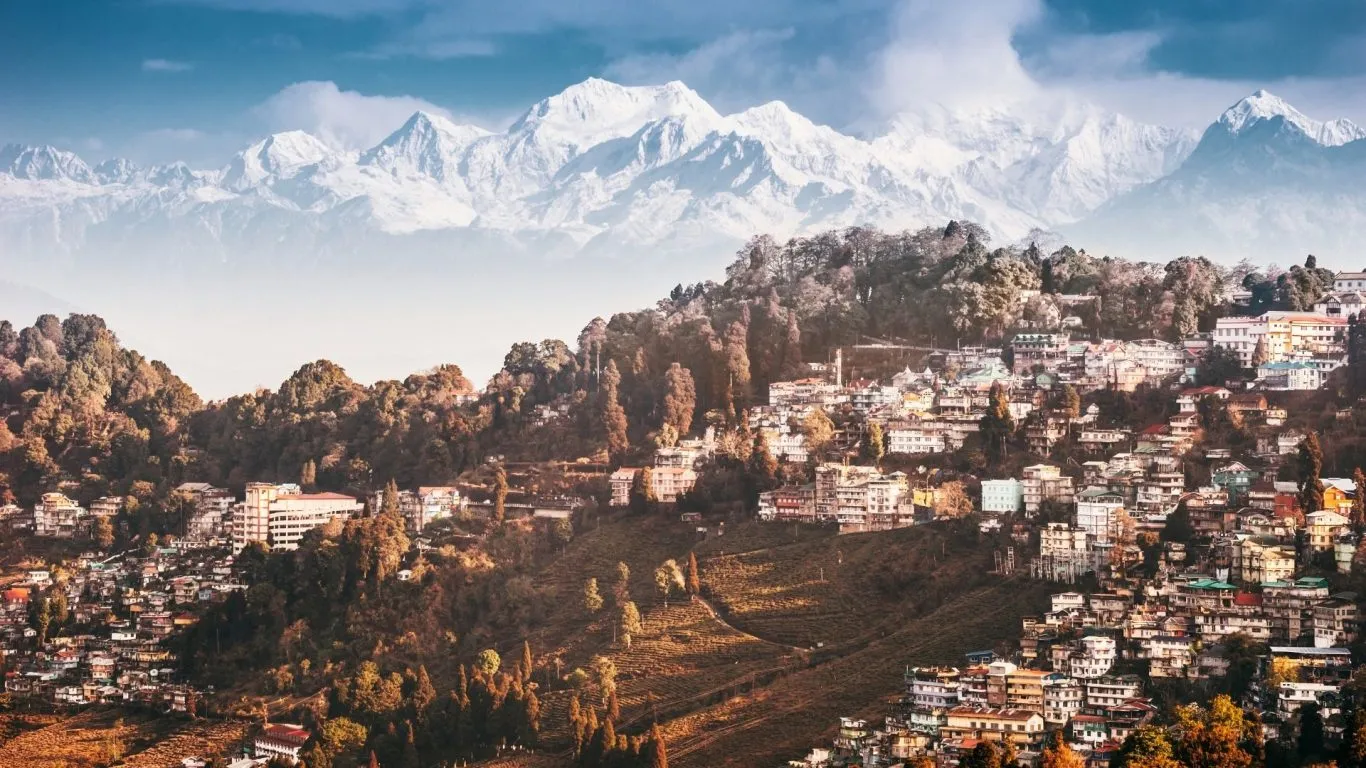AN ELGIN EXCLUSIVE FEATURE
Tea tourism is a wonderful experience that gives the tourist an opportunity to understand what tea is.
Darjeeling tea, or Camellia sinensis var. sinesis (plant’s scientific name), is cultivated, grown, produced, manufactured, and processed in tea gardens in the hilly areas of Sadar Subdivision of Kalimpong District, and Kurseong subdivision of the District of Darjeeling.
Darjeeling tea is processed as black tea, though some estates process green, white and oolong tea as well. Darjeeling tea is best known for its muscatel flavor, described as a “musky spiciness – a unique muscat-like fruitiness in aroma and flavor”. The tea leaves are harvested by plucking the plant’s top two leaves in between March and November. This time is divided into four flushes.

Image by sarmaya.in
Darjeeling Tea plantation workers, late 19th century.
In 1841, tea was planted in Darjeeling for the very first time by Dr. Campbell of Indian Medical Services, a doctor, and an economic botanist. At the time British were trying to find a source of tea outside of China. The first commercial tea gardens were established in 1856. By 1866 there were 39 tea gardens in Darjeeling. Soon Darjeeling’s population had grown from less than a 100 in the 1830s to over two lakh people with 100 tea gardens by 1890.
The British permitted the tea garden owners usage of only 40% of the land for cultivating tea. After independence, British began to sell their stakes in the gardens to Indians. In 1953, Tea Act put the tea industry under the regulatory jurisdiction of Tea Board of India. With this, more area was open for cultivation and yields increased from 7.8 to 10 million kilogram in the mid 1900s.
Out of the four flushes, tea connoisseurs find the tea from the first two flushes to have the finest quality.
The first plucking of Spring, between March and May, is the first flush. This produces tender leaves, which make tea that is gentle, with very light color and aroma, and a mild astringency. Second flush is harvested in May and June after the insects, tea tortrix (moth) and leafhoppers, have attacked the plants (this results in the muscatel flavor of tea). The monsoon flush monsoon flush is July to September consisting larger and less flavorful leaves. The autumnal flush is harvested in October and November provides tea which has a soft muscatel flavor but with a fuller body and darker color.

Image by Ahmad Tea.
Different colours of tea from different flushes.
Many estates overlook the scenic beauty of snow-capped Himalayas. The tea estates and gardens are located on the hillsides, between 500 and 2,000 meters in elevation.

Image by teafloor.com
A sunrise through the Glenburn Tea Estate in Darjeeling.





